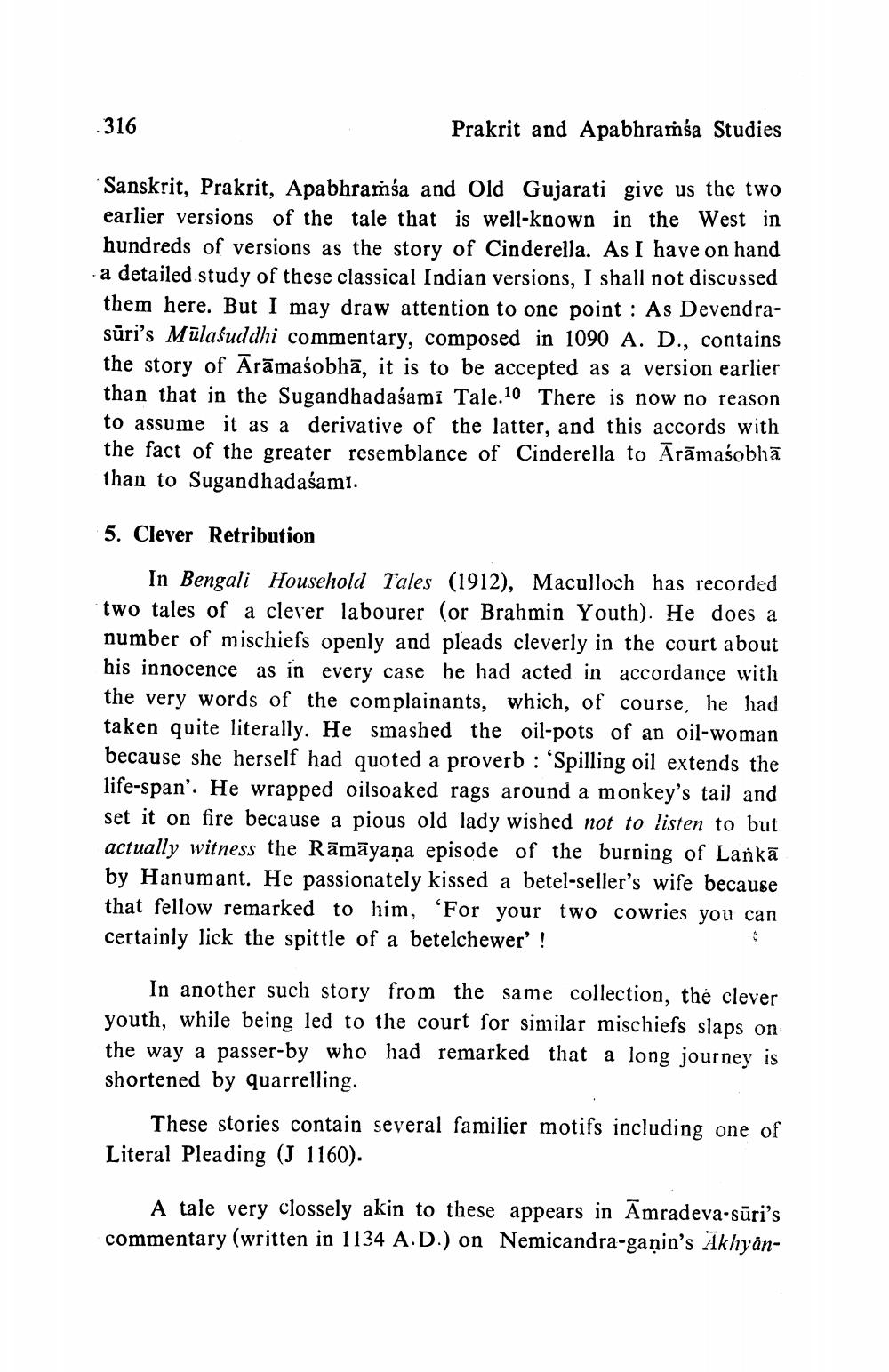________________
316
Prakrit and Apabhramśa Studies
Sanskrit, Prakrit, Apabhramśa and Old Gujarati give us the two earlier versions of the tale that is well-known in the West in hundreds of versions as the story of Cinderella. As I have on hand a detailed study of these classical Indian versions, I shall not discussed them here. But I may draw attention to one point: As Devendrasuri's Mulaśuddhi commentary, composed in 1090 A. D., contains the story of Aramaśobha, it is to be accepted as a version earlier than that in the Sugandhadaśami Tale.10 There is now no reason to assume it as a derivative of the latter, and this accords with the fact of the greater resemblance of Cinderella to Aramaśobhā than to Sugandhadasami.
5. Clever Retribution
In Bengali Household Tales (1912), Maculloch has recorded two tales of a clever labourer (or Brahmin Youth). He does a number of mischiefs openly and pleads cleverly in the court about his innocence as in every case he had acted in accordance with the very words of the complainants, which, of course, he had taken quite literally. He smashed the oil-pots of an oil-woman because she herself had quoted a proverb: 'Spilling oil extends the life-span'. He wrapped oilsoaked rags around a monkey's tail and set it on fire because a pious old lady wished not to listen to but actually witness the Rāmāyaṇa episode of the burning of Lanka by Hanumant. He passionately kissed a betel-seller's wife because that fellow remarked to him, 'For your two cowries you can certainly lick the spittle of a betelchewer' !
#
In another such story from the same collection, the clever youth, while being led to the court for similar mischiefs slaps on the way a passer-by who had remarked that a long journey is shortened by quarrelling.
These stories contain several familier motifs including one of Literal Pleading (J 1160).
A tale very clossely akin to these appears in Amradeva-suri's commentary (written in 1134 A.D.) on Nemicandra-gaṇin's Akhyān




